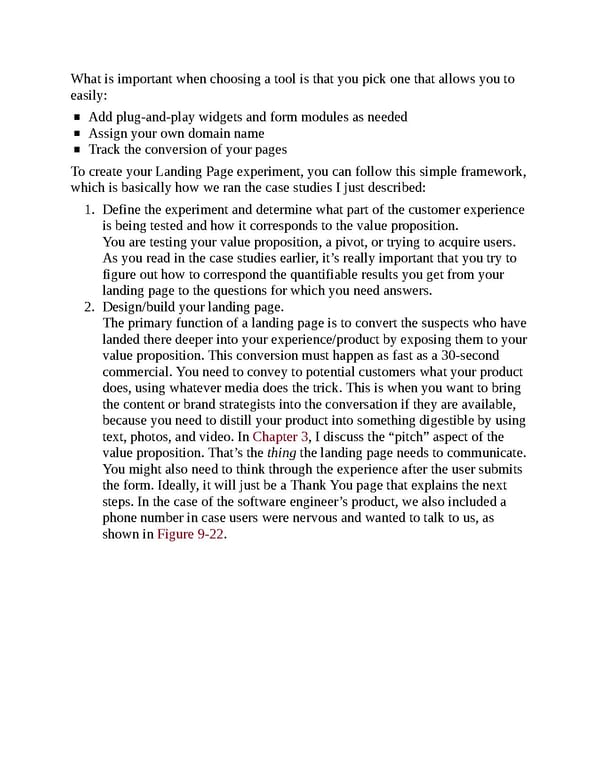What is important when choosing a tool is that you pick one that allows you to easily: Add plug-and-play widgets and form modules as needed Assign your own domain name Track the conversion of your pages To create your Landing Page experiment, you can follow this simple framework, which is basically how we ran the case studies I just described: 1. Define the experiment and determine what part of the customer experience is being tested and how it corresponds to the value proposition. You are testing your value proposition, a pivot, or trying to acquire users. As you read in the case studies earlier, it’s really important that you try to figure out how to correspond the quantifiable results you get from your landing page to the questions for which you need answers. 2. Design/build your landing page. The primary function of a landing page is to convert the suspects who have landed there deeper into your experience/product by exposing them to your value proposition. This conversion must happen as fast as a 30-second commercial. You need to convey to potential customers what your product does, using whatever media does the trick. This is when you want to bring the content or brand strategists into the conversation if they are available, because you need to distill your product into something digestible by using text, photos, and video. In Chapter 3, I discuss the “pitch” aspect of the value proposition. That’s the thing the landing page needs to communicate. You might also need to think through the experience after the user submits the form. Ideally, it will just be a Thank You page that explains the next steps. In the case of the software engineer’s product, we also included a phone number in case users were nervous and wanted to talk to us, as shown in Figure 9-22.
 UX Strategy: How to Devise Innovative Digital Products that People Want Page 272 Page 274
UX Strategy: How to Devise Innovative Digital Products that People Want Page 272 Page 274